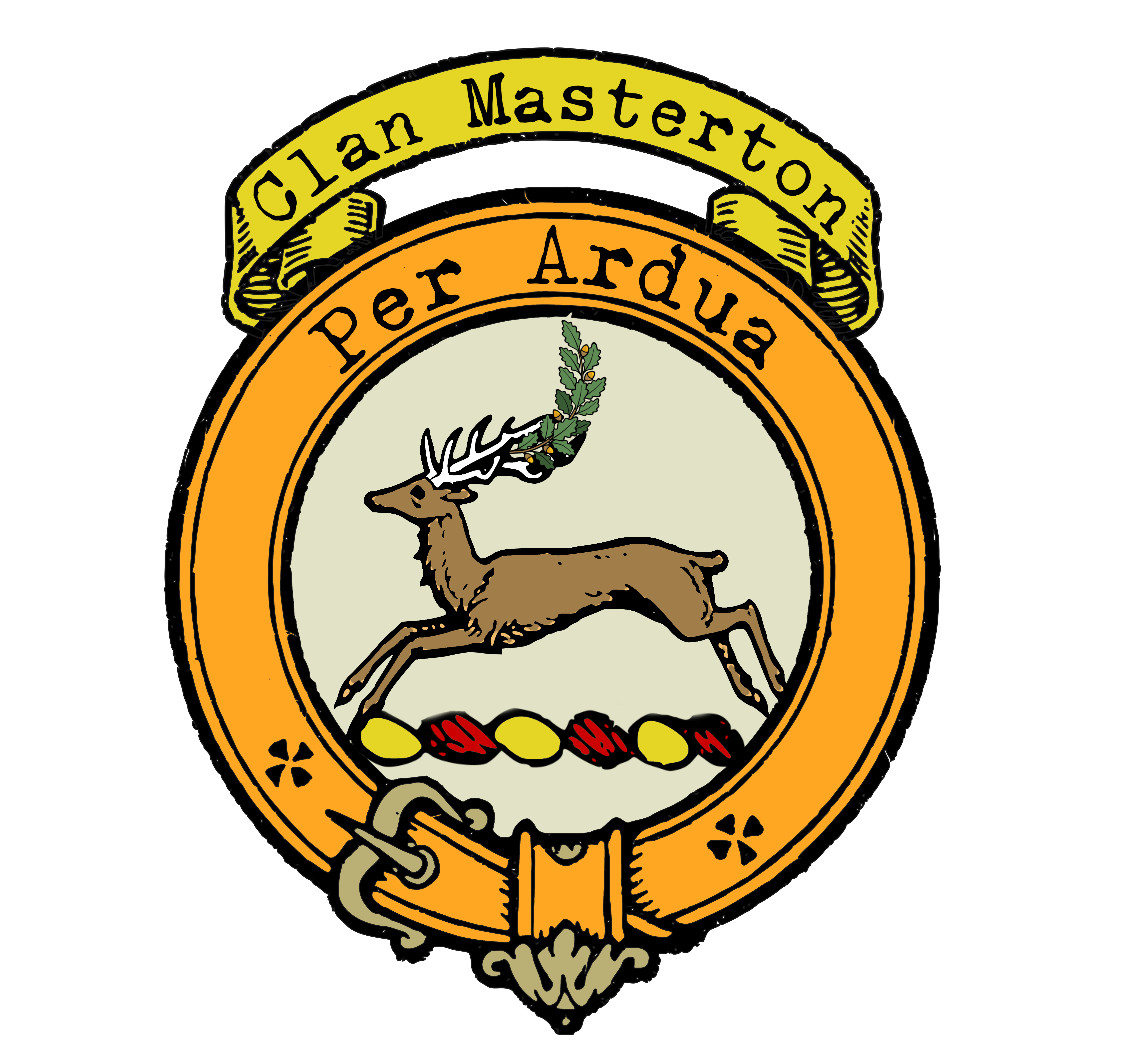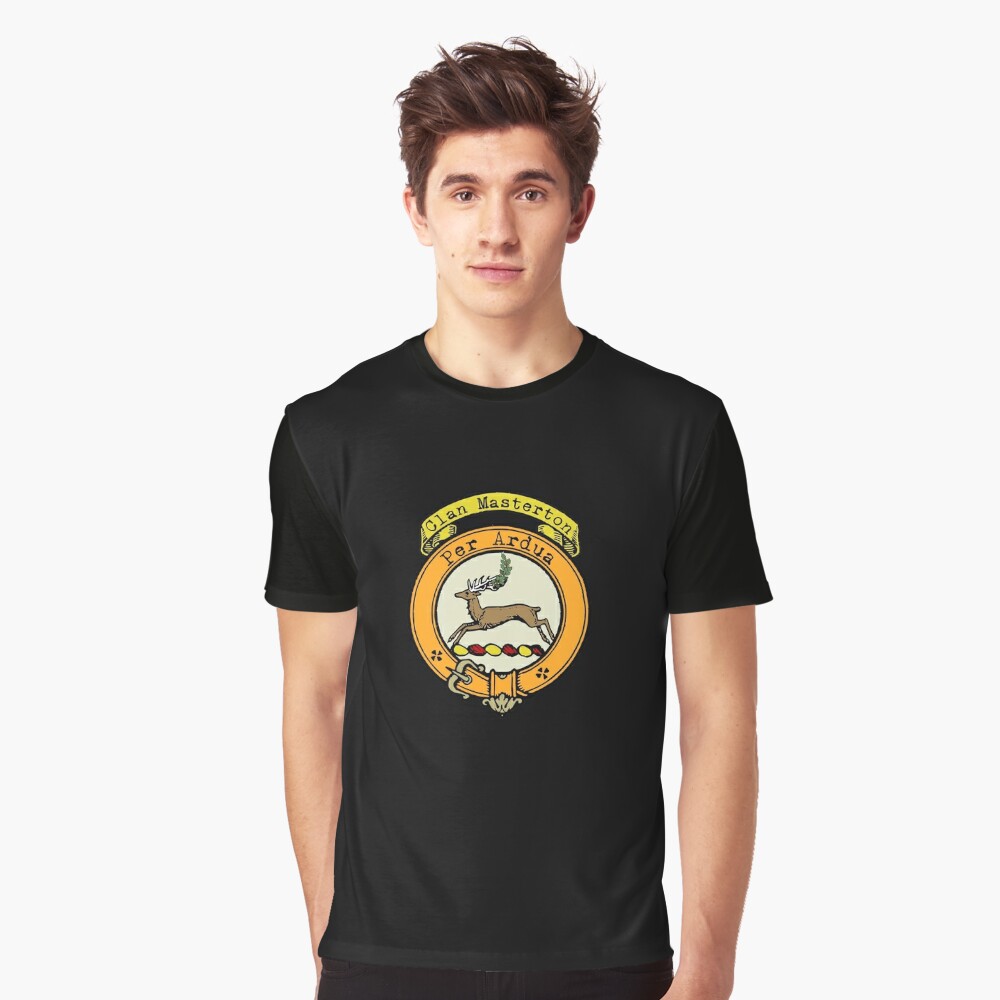Clan Masterton Crest
|
|
CREST: A stag courent bearing on his attyres an oaken slip fructuated Proper MOTTO: Per ardua TRANSLATION: Through difficulties VARIATIONS: N/A |
| In the annals of Scottish history, a land named Ledmacdunegil, later known as Ledmacduuegil or Lethmachduuegil, holds the first threads of Clan Masterton’s tapestry. It is here, near Dunfermline, Fife, that the land once owned by the Magister Ailricus, cementarius (Master Ailric the Mason), bestowed the name Masterton upon generations to come. The title “maister,” typically held by eldest sons of barons, lent its distinction to the clan’s members.
As ownership and tenancy intertwined, the surname Masterton took root, a testament to the intimate relationship between land and identity. In 1296, the pages of history unveil the name “Masterton” with the homage rendered by William de Mastertone or de Meystertone from Fife. His seal bore a lion rampant with a rose, an emblem that would grace the clan’s identity. The descendants of William de Mastertone retained Masterton until the 16th century, showcasing the family’s enduring presence. Duncan de Maysterton’s presence in 1316, witnessing Duncan, Earl of Fife’s homage to the abbot of Dunfermline, stands as a testament to the clan’s societal connections. Symon de Maysterton’s role as a rector and Sir Thomas Masterton’s position as a canon regular of Cambuskenneth in 1476, exemplify the diversified roles the clan members played in medieval society. The winds of change that followed the Reformation era marked a shift in the clan’s trajectory. Alexander Masterton of Beath, born in 1604, became a prominent figure. His marriage to Catherine Brown and their 11 children solidified the Mastertons of Grange. As a representation of the changing times, Adam Masterton of Parkmill’s ownership of land in Clackmannan and his descendants’ journey underline the clan’s adaptability. The legacy of the Masterton clan is adorned with coats of arms that carry a narrative of their own. From the registered arms of Adam Masterton of Grange to Robert Masterton of Bad’s use of an eagle displayed impaling a chevron with a crescent, these symbols symbolize the family’s values, aspirations, and unity. While the roots of Clan Masterton run deep in Scotland, a surprising connection spans across oceans. In New Zealand, Masterton, a town founded in 1854, bears the name of Joseph Masters, unrelated to the Scottish clan but serving as a poignant reminder of how names can bridge geographical distances. |
|
Citations:
|
|

Purchase @ Redbubble
Purchase @ Amazon.com
Purchase @ Amazon.co.uk

